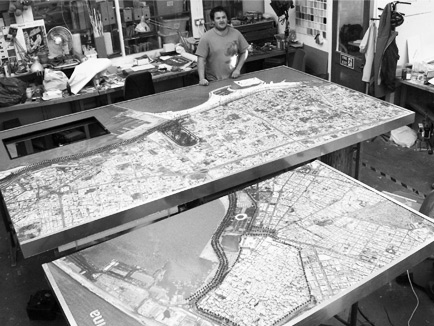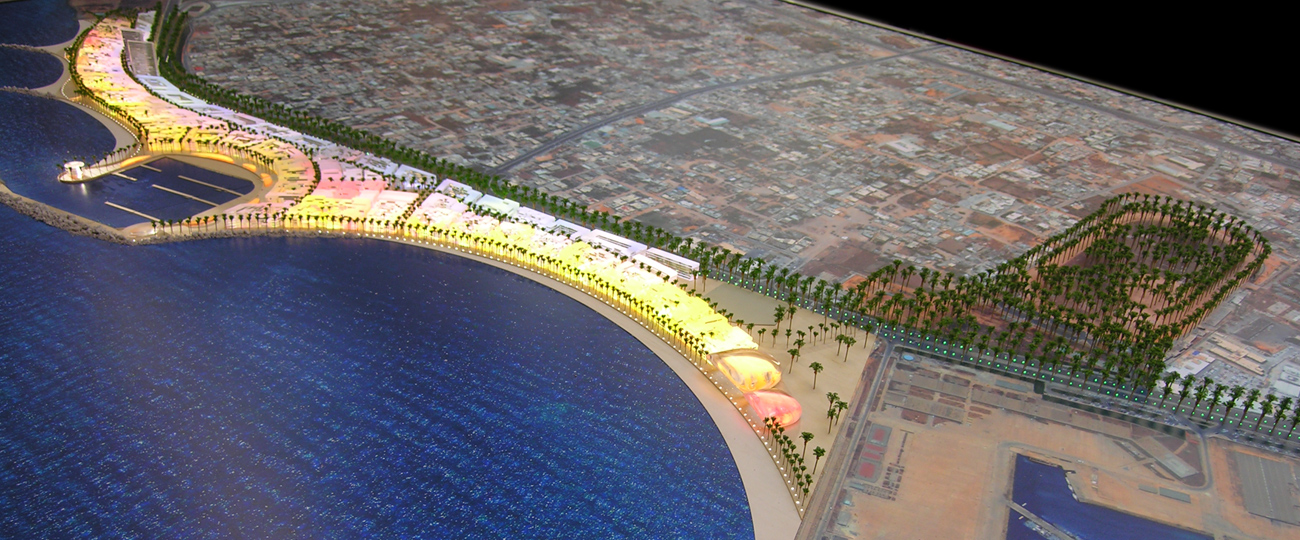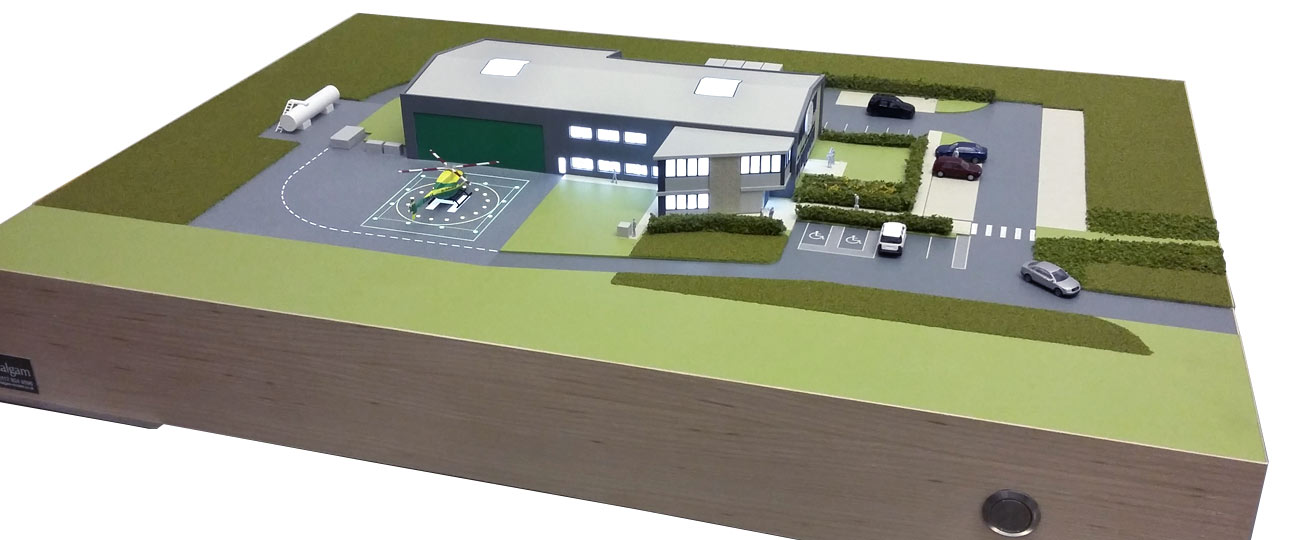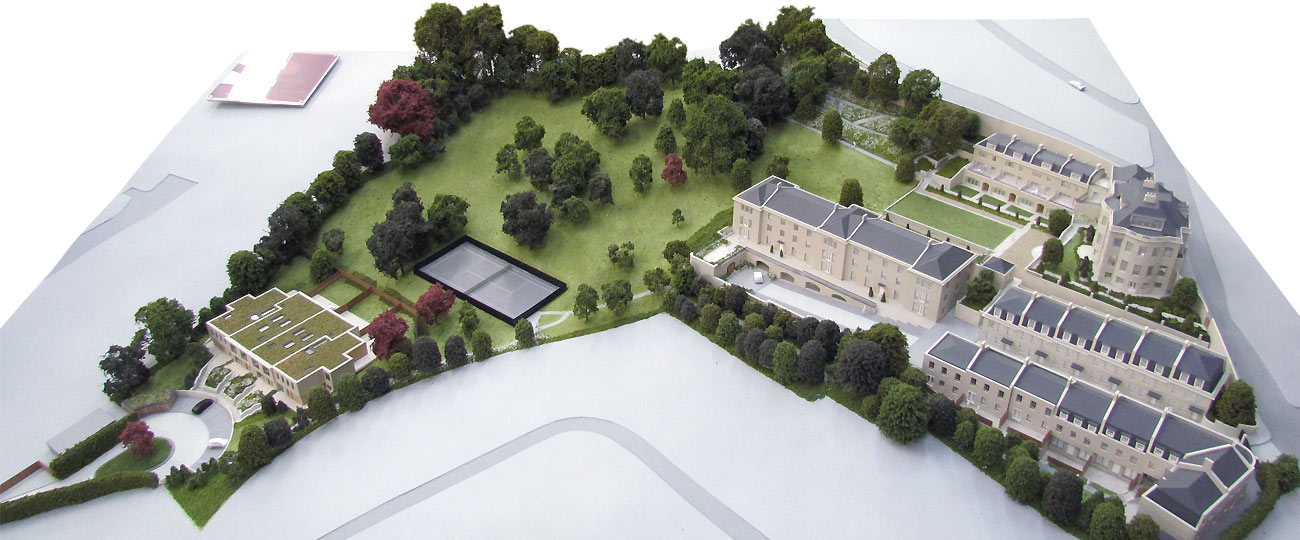The huge masterplan model is constructed from striking illuminated blocks, but the offsite detail, ocean and surrounding areas of the 1: 1250 model are represented by a huge aerial photograph incorporated into the baseboard.
The Tripoli model is one of the more striking masterplan models we have made, in part due to its size and unique baseboard. Typically we would use hand-finished hardwood blocks and veneering techniques to represent the offsite features, since wood has a good natural finish after being taken to a certain grade of sandpaper and requires no further treatment. It also provides a good contrast to the central scheme, which may be representing in more contemporary materials and methods such as 3D printing, polished acrylic or metals such as brass and aluminium.
A masterplan model need not be huge. While big models have an undeniable impact, small models can be just as communicative and have an engaging jewel-like quality. They are also high economic and portable, and lend themselves just as much to high-concept abstraction as they do practical representation and stripped-back simplicity. It is also possible to include lighting in these small models, and we have the facilities and technical knowhow to incorporate dynamic and interactive lighting elements within a model.
A good example of a small masterplan model is the Carmenzind creative settlement model, which incorporates some incredibly intricate modelmaking in the central scheme to communicate louvres and canopy structures at 1:1000 scale.






